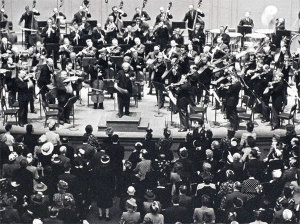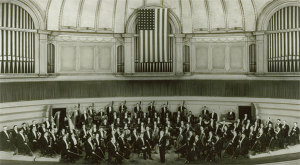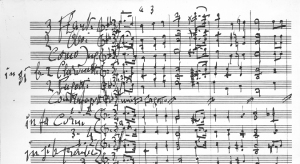To play or not to play National Anthem

Just before America’s entry into World War II in 1941, the New York Philharmonic found itself in a dispute over the placing of two American flags on its stage and the playing of the National Anthem before every concert. It was up to Arthur Judson, manager of the orchestra, to answer pro and con letters.
Arturo Toscanini had previously led the Philharmonic but now conducted the NBC Symphony. In concerts broadcast over radio, he would turn to face a standing audience and lead them in singing “The Star-Spangled Banner.” The musicians also rose from their chairs as they played.

Orchestras around the nation soon copied Toscanini’s style, which led to an October 23, 1941, letter –written six weeks before Pearl Harbor – to the New York Philharmonic. “I was much annoyed in having to stand while the orchestra played the Star Spangled Banner,” a man wrote. “This is not symphonic music.”
Judson replied that “it’s not a decision of the Philharmonic or its board but of the American Federation of Musicians and will be done by all union orchestras in the U.S.” A woman’s letter supported the flag tribute by declaring that “our country is practically at war and I feel that it is high time that we…developed some feeling of patriotism.”

On May 2, 1942, when the U.S. was at war, another subscriber announced in a letter that he was not renewing his subscription to the concerts because “to inject [patriotism] where it does not belong…strikes a discordant note.” Judson, who might have been fed up by this time with the back-and-forth letters, responded, “Anyone who resents [the Anthem] certainly ought not to subscribe [to the symphony]. We therefore welcome your withdrawal.”
After the war ended in August 1945, the Philharmonic altered its National Anthem use, causing still more letters to pour in about the American flag. On October 19, 1945, for example, a man complained: “At last night’s concert I was amazed at the omission of our national anthem….Was it an accidental omission?”
Judson explained that “with the end of the War, we played [the Anthem] at the beginning of each series of concerts….For the second concert of each series, we have gone back to the customary practice” of not playing it.
That response would become his standard answer to others who missed “The Star-Spangled Banner,” which had been a regular feature for four war-torn years.
